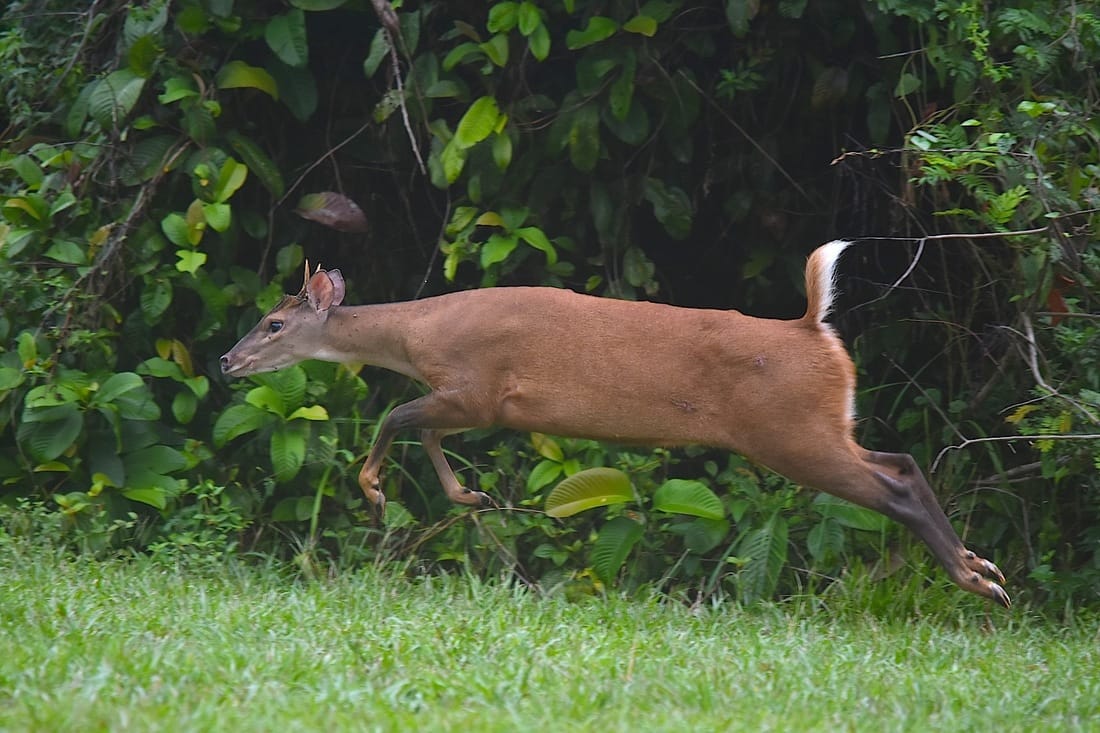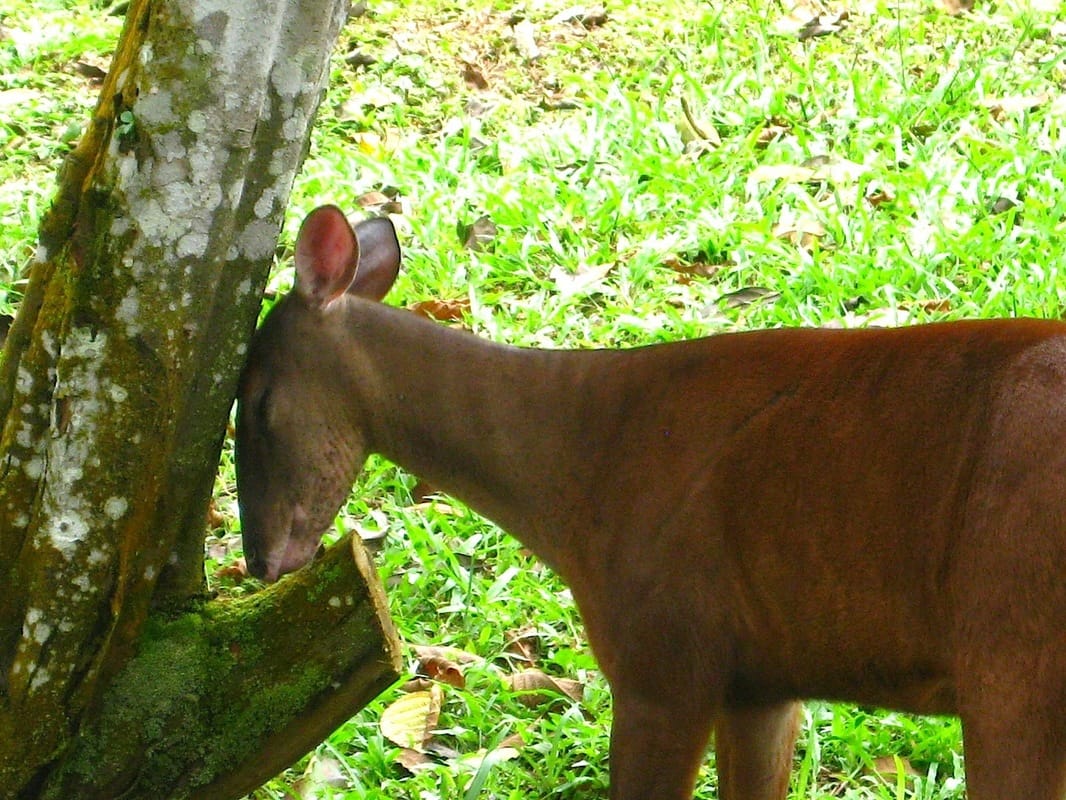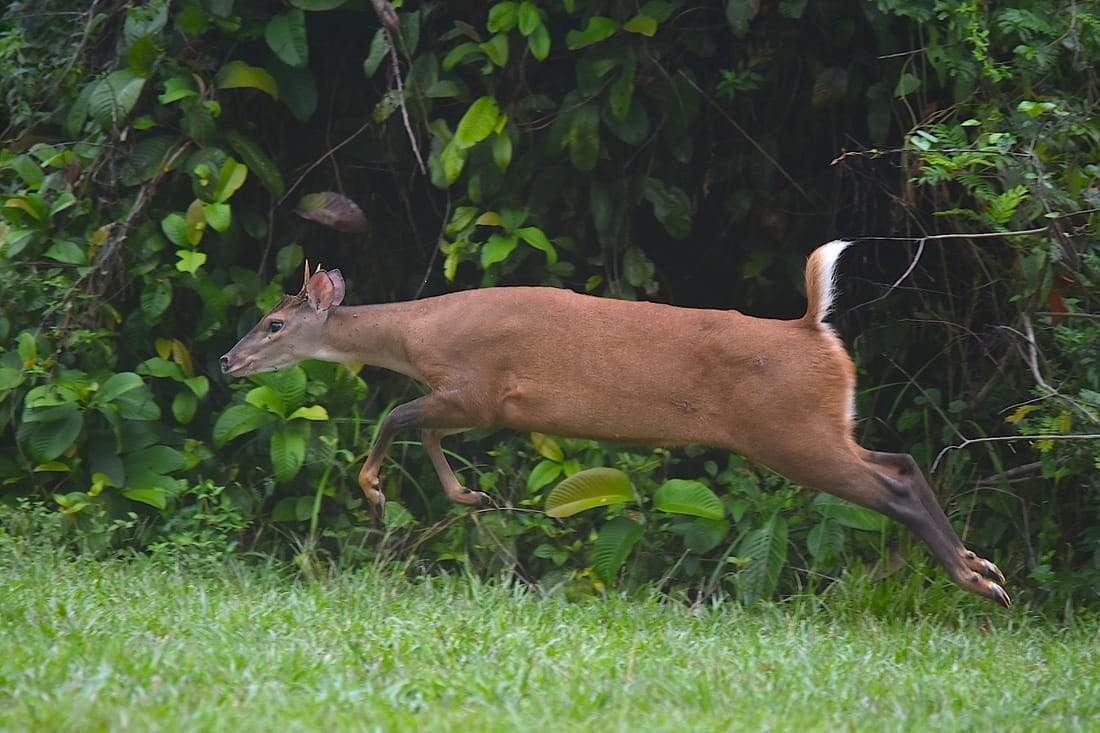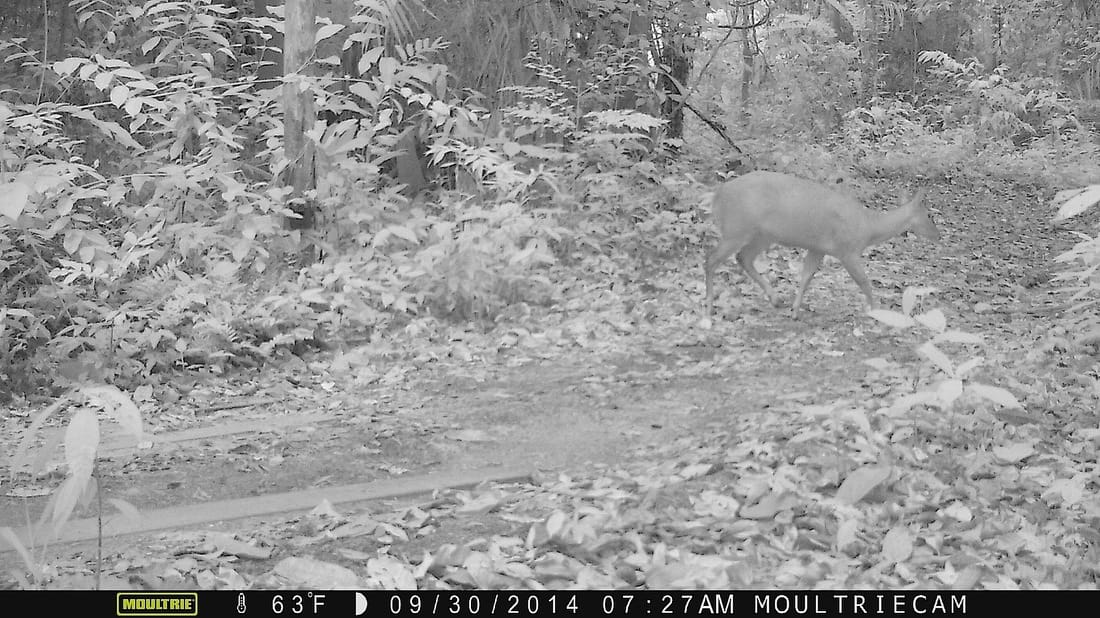|
Our own dashing Red-brocket Deer. Meet one of our residents at Kabalebo. Red-brocket Deers (Mazama Americana) are the largest of all brocket deers (with a length between 1 mtr - 1.30 mtr, weighing between 20 - 50 kg). They also have a large range which they can call 'home': from Central-America til the Amazon Basin and part of Argentina. Red-brocket Deers have a stout-bodied appearance (heavy build) with a small head. In general they have a red-brownish back and some white under the tail and legs. They are solitary animals who like to stay under the radar, by moving silently near the airstrip edge or close to the dense vegetation. The moment they notice you they will 'freeze' on the spot, explaining why the majority of the pictures below show the same pose. This is a female Red-brocket Deer. She has been spotted quite close near the lodge but always on the safe side: the forest edge. 'Cause the moment she'll get noticed she just needs to take a leap of faith into the forest. These pictures were taken during broad day light, but occasionally I have also seen them during the night eating some leaves or twigs. Sometimes she also eats some mango's that we have thrown onto a large heap at the sideline. Red-brocket Deers are locally known as Redidia referring to their reddish/brownish appearance. Unlike the female, male Red-brocket Deers are seen with antlers. Some have a little stump on top of their head, while others have these small and spikey looking daggers. They have these little antlers so that they won't get tangled between all those dense vines in the forest. It looks like this female was either sleeping or praying, but actually she was marking her territory. She was so caught up in her job that she didn't even notice me. Red-brocket Deers are solitary animals but only during mating season they will find or look for each other. Gestation time (the state of being pregnant until birth) is approximately 8 months or between 218 - 228 days. Here you see one that is expecting. After mating season, the male will not stay nearby. The female will give birth to one young and they will carry the white spots for at least 2 or 3 months. After that the spots will slowly fade away. Being hunted for their meat and deforestation are usually the biggest threat for the Red-brocket deer. But when there is an environment where they are not threatened or hunted, you will likely see a Red-brocket Deer passes by regularly, whether with your own eyes or via a trap cam.
You may also like the following post: Comments are closed.
|
Archives
June 2024
Categories
All
|











 RSS Feed
RSS Feed